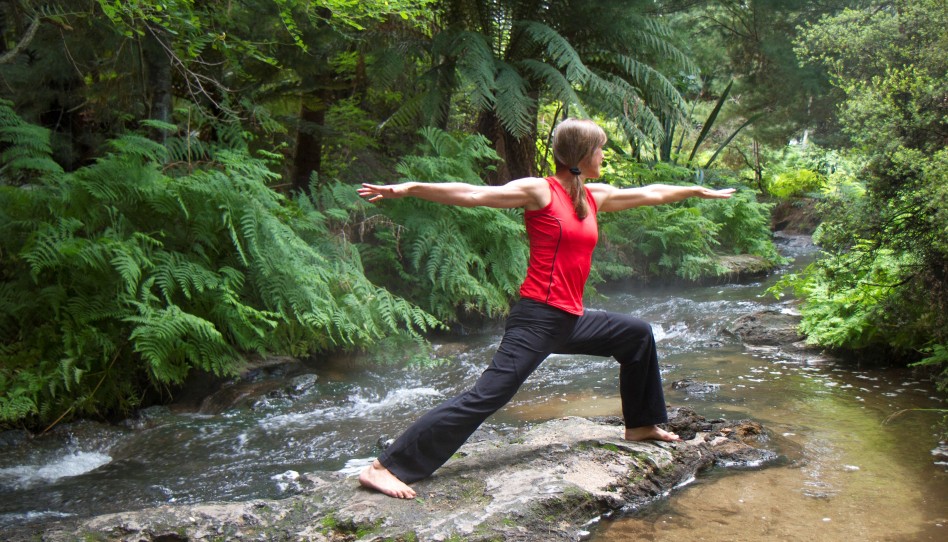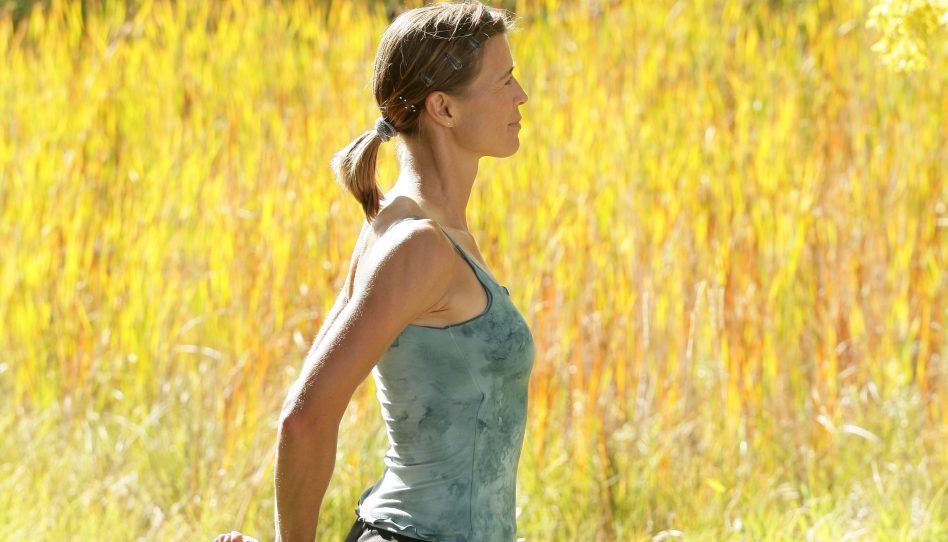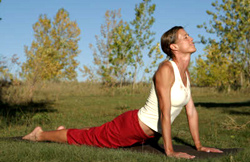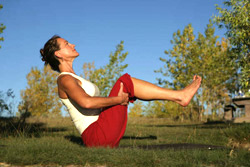Yoga: An Ancient Indian Science of Exercise and Healing
Yoga has been around for thousands of years

More than 5,000 years ago, yoga started its journey as an ancient Indian science of exercise and healing, passed along from teacher to student through oral tradition and physical practice.
Yoga is also known as one of the oldest holistic health care systems, not just because of its fundamental healing approach, but also because of its many benefits for physical, mental and spiritual wellbeing.
Translated from Sanskrit, the classical language of India, the word “yoga” means “union,” or “to yoke or join.” This union is about the individual consciousness joining with something greater—some may call that God, the divine, or universal consciousness. We also refer to yoga as the union of body, mind and spirit—a union we can reach through the yoga practices of specific postures (asanas), breathing exercises (pranayama), relaxation techniques(pratyahara and dharana) and meditation (dhyana).
The history of yoga can be grouped into four periods. The earliest period ofVedic Yoga focused on the Vedas, the sacred scripture of Brahmanism that is the basis of modern-day Hinduism. The Vedas contain the oldest known Yogic teachings. This period was characterized by rituals and ceremonies that allowed one to surpass the limitations of the mind and live in divine harmony.
Preclassical Yoga lasted for more than 2,000 years, up to the second century A.D. Classical Yoga spanned the period that the physician and philosopher Patanjali describes in his Yoga Sutras, the Eightfold Path to enlightenment. (For more information, see our “Eight Limbs of Yoga” article.) Postclassical Yoga leads to the creation of Hatha Yoga, which is currently the form of yoga most practiced in the Western world.
Yoga Masters — A Teachers’ Calling
Throughout history, yoga masters have brought deep devotion to their teaching, passing on their knowledge to students with passion and humility. We would like to acknowledge a few of these masters with gratitude. Their dedication and creativity gives us the ability to experience yoga as we know it today. Patanjali, one of the ancient sages of India, was a physician and philosopher, as well as a grammarian. He penned the Yoga Sutras about 2,000 years ago. His writings, which explain and instruct on all aspects of yoga practice (including the ever-pertinent topic of how to handle stress), are written in the form of many aphorisms. Patanjali’s Yoga Sutras is one of the most foundational pieces of yoga literature. It is still taught today, and is a part of almost every aspiring yoga teacher’s curriculum.
Sri. T. Krishnamacharya is a descendant of the legendary yogi Nathamuni, who lived in the 9th century. Krishnamacharya’s teachings were based on his lifetime studies of Patanjali’s Yoga Sutras. He created and began teaching Viniyoga in the 1970s. Though steeped in the ancient teachings of yoga, he was able to combine them with the evolving needs of yoga students in the modern world. T.K.V. Desikachar, Sri. T. Krishnamacharya’ son, continues to teach and evolve his father’s work.
Another outstanding teacher is B.K.S. Iyengar. He studied for a short time with Krishnamacharya, and he later found Iyengar yoga. This classical and therapeutic style of yoga is one of the most widely recognized approaches to Hatha Yoga. B.K.S. Iyengar’s book Light on Yoga has become one of the most popular writings of yoga in the Western world.
Another master we want to mention is Swami Sivananda of Rishikesh, India, founder of Sivananda Yoga. His life was totally devoted to his teachings and his students. His beautiful yoga style is taught in more than 80 centers around the world. His disciple Swami Vishnu-devananda came to the United States in 1957, and established the first Sivananda Yoga Vedanta Center.
Sri Swami Satchidananda, the late founder of Integral Yoga, believed that true and lasting happiness is our very own nature: what we seek is already found within. Integral yoga is a sweet and gentle style that, today, is taught throughout the world.
Yoga Sutras – the Eightfold Path to Enlightenment
Yoga – One Path, Many Styles
In this and other articles on this site, we have introduced you to many styles of yoga, and to masters and their teachings. (See our “One Path, Many Styles” series, part 1, part 2 and part 3.) It is widely accepted that these and almost all other yoga styles were influenced by the Yoga Sutras. The text is still very applicable today, offering us guidance to lead a more peaceful and balanced life. If you would like to delve a little deeper into what is behind your physical practice of yoga, we suggest looking at the Yoga Sutras. You might even think about joining or creating a group for book study.
Whatever your goals, they are all good! If it is simply dedicating an hour now and then to move your body on the mat, that would be wonderful. If you are also practicing the breathing exercises and meditation, that would be awesome. Your yoga practice will evolve and may deepen. Even in the beginning we experience the benefits, in our body and in how we handle stress. (For more information, see our “Benefits of Yoga” article.) Hang in there, and you might be on your way to spiritual enlightenment!
Yoga for the Right Balance
With this article, we wrap up our introduction to yoga. We started with “Yoga for the Right Balance“, explored different yoga styles, benefits of yoga, and more. Future writings will include various topics and specifics of yoga teachings and the science of practicing yoga with all its components. We will explore additional teachings about yoga for athletes (See our “Yoga for Performance” series, introduction, part 1, and part 2.), the art of breathing (pranayama) and meditation (dhyana), including their benefits, and more.
We hope you have found enough information to start on the road to becoming a yogi or yogini. Take your time, enjoy the process of getting started, but most of all learn to feel and see the power within yourself through your yoga practice – and of course, RELAX! Yoga should give you pleasant feelings–a way to find physical and spiritual alignment without pressure and strain, and to find your inner balance and peace.
As Swami Sivananda explained, “Yoga is the science that teaches us the method of uniting the individual soul with the Supreme Soul, of merging the individual will in the Cosmic Will.” Here is one more thought from his teachings: “Yoga is the master key to unlock the realms of Peace and Bliss, Mystery and Miracle.”
Namaste!
Your Take The Magic Step™ Yoga Team
Reading Suggestions:
Updated May 5, 2020
- Posted August 24, 2006
© Copyright 2006-2024 by Uta Pippig and Take The Magic Step®. All Rights Reserved.




